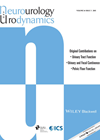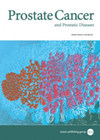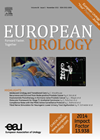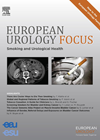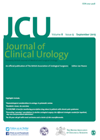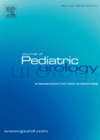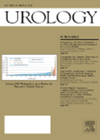
Journal Reviews archive for 2016
Liquid paraffin versus lidocaine
Topical anaesthetics have been used in urology since 1884, when Pease described using “cocaine in a sensitive urethra with charming results”. Since 1949, 2% lidocaine has been increasingly used intraurethrally for cystoscopy and other procedures. This article is a pilot...
Predicting bone scan positivity in non-metastatic CRPC
There is evidence that suggests that early treatment with chemotherapy, immunotherapy or hormone therapy leads to a better response in patients with asymptomatic metastatic castrate resistant prostate cancer (CRPC). This study aimed to predict bone scan positivity in patients with...
Rectal swab testing before prostate biopsy
This study explored the real terms value of rectal swab testing and targeted antibiotic prophylaxis in patients undergoing transrectal ultrasound prostate biopsy in view of increasing bacterial resistance to fluoroquinolones (17.6% in North America, 40% in Hong Kong). The authors...
The potential of statin use in castrate resistant prostate cancer treatment
One of the mechanisms by which prostate cancer achieves castrate resistance is through de novo intratumoral production of androgens. Reactivation of androgen receptors results in promotion of cell survival and proliferation pathways despite castrate serum testosterone levels. As androgen synthesis...
Research needs you
This was an eye-catching front cover headline for the BMJ. Is research as important as clinical duties? The answer has to be yes. Research takes place in every NHS hospital, albeit in a fragmented way. All of us have to...
Comparing NSAIDs with antibiotics in the treatment of uncomplicated UTIs in women
Uncomplicated urinary tract infections (UTIs) are a common presentation in primary care, however there is increasing concern regarding antibiotic use and resistant organisms. In this double-blind randomised German study, the authors seek to establish if ibuprofen 400mg three times a...
Reviewing the evidence for TNS in neurogenic lower urinary tract dysfunction
Tibial nerve stimulation (TNS) is a recognised minimally invasive treatment option for bladder overactivity and non-neurogenic lower urinary tract dysfunction. In this systematic review, the role TNS can play in the management of neurogenic lower urinary tract dysfunction is evaluated...
Smoking and urological health
European Urology Focus is a new sister journal to European Urology. It is peer-reviewed and will be published six times per year in electronic format. The first issue deals with smoking and urological diseases. It makes for very interesting reading...
The importance of second-look transurethral resection for superficial bladder cancer
This was a prospective study of 100 consecutive patients with a newly diagnosed superficial bladder tumour who underwent a second look transurethral resection of bladder tumour (TURBT) two to six weeks post initial resection. This essentially included pTa multiple and...
Urinary NGAL, KIM-1 and L-FABP concentrations in antenatal hydronephrosis
he elusive search for being able to diagnose pelvi-ureteric junction obstruction (PUJO) continues and this group of researchers investigated the possible clinical application of urinary neutrophil gelatinase-associated lipocalin (uNGAL), urinary kidney injury molecule-1 (uKIM-1) and urinary liver-type fatty acid-binding proteins...
Vitamin B12 deficiency in patients after enterocystoplasty
It is well known that enterocystoplasty within terminal ileum leads to vitamin B12 deficiency and regular monitoring of this post-surgery is essential. Often supplements need to be given because of deficiency in up to 40% of patients. These authors looked...
RN or PN for small RCCs – the debate continues
This is a retrospective study to evaluate kidney function and overall survival (OS) in patients who underwent partial nephrectomy (PN) and radical nephrectomy (RN) for RCCs <4cm. They looked at 2110 patients who underwent RN/PN for T1a renal cell carcinomas...

